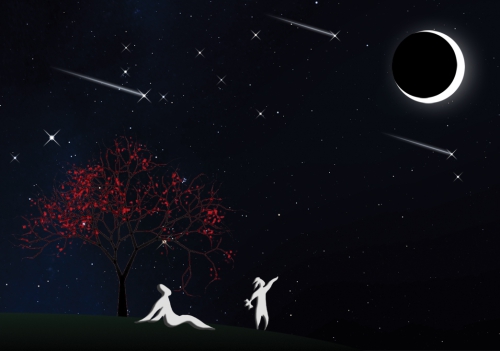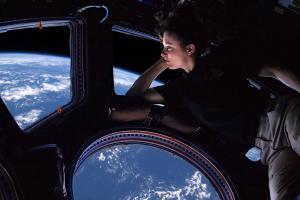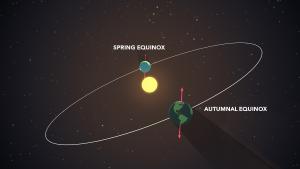
Stargazing Nights - CLOSED
- Where:
- Frosty Drew Observatory
- When:
- Fri, Sep 20, 2019 - CLOSED
- Cost:
- $5 Suggested Donation per person 5 years and older
Tonight is Stargazing Night at Frosty Drew Observatory and forecasts are calling for mostly clear skies. The 10:37 pm Moon rise will bring the 66% waning gibbous Moon, with dark skies rocking the night before hand. Sadly, nearly all of our team are away this weekend. It figures it would be on the clear(er) night. So Frosty Drew Observatory will remain closed tonight. We apologize if you were looking for a mega astro fix this weekend, but our super dedicated team of volunteer astronomers and sky evangelists need a break sometimes. We will return to our regular Stargazing Nights event schedule on Friday, September 27, 2019.
--------------------------
Weekly Happenings
Scott MacNeill
If you have a chance to step outside tonight, be sure to catch a fabulous view of the International Space Station passing overhead. Starting at 8:00 pm in the SW, the ISS will become visible, eventually passing overhead and into the ENE sky before passing into Earth’s shadow (orbital sunset) at 8:05 pm. This will be a stunning pass, certainly not one to miss! Additionally, the ISS has just begun the current cycle of evening passes over the US. Stay up to date with pass times on the Frosty Drew Observatory website for daily passes applicable to Southern New England and generally the Northeast. For pass times specific to your location, visit NASAs Spot the Station.
This coming Monday, September 23, 2019 at 3:50 am ET, Earth will reach the point in our orbit where the Northern Hemisphere is neither tilted towards nor away from the Sun. This is the Autumnal Equinox, and hails the start of autumn in the Northern Hemisphere. Earth is tilted 23.4° on its axis, and depending on where Earth is in our orbit around the Sun, will determine if that tilt is towards the Sun or away from the Sun. This is what gives Earth its seasons. On the Summer Solstice, Earth reaches maximum tilt (23.4°) towards the Sun, skip ahead six months and we have the Winter Solstice, when Earth reaches maximum tilt (23.4°) away from the Sun. March and September bring the equinoxes, when Earth’s axial tilt is neither toward nor away from the Sun. On these two days (including Monday), all locations on Earth will experience an equal amount of daytime and nighttime. If you stand at the North Pole or South Pole, the Sun would ride the horizon all day. After the Autumnal Equinox, nighttime periods become longer than daytime periods on a daily basis in the Northern Hemisphere. So celebrate the start of Autumn and all the leaf-peeping, pumpkin eating craziness that comes with the switch into the darker side of the year, and have a Happy Autumnal Equinox from all the astro geeks at Frosty Drew Observatory!
Save the Dates:
Here are a few happenings at Frosty Drew Observatory to geek out your autumn. Add them to your calendar, so you don’t miss out.
Saturday, October 5, 2019 will bring International Observe the Moon Night to Frosty Drew Observatory
Friday, October 25, 2019 will bring the Frosty Drew Observatory annual Halloween Spooky Views event. A night of creepy things under the stars.
Monday, November 11, 2019 will bring the Transit of Mercury to the sky and Frosty Drew Observatory will open for the day, in sunlight, to observe the fabulous event.
-Scott
Check out our page on Visiting Frosty Drew Observatory to learn more about what to expect at the Observatory and better help you prepare for your visit.
Please note that we do not allow any white lights on our campus from dusk - dawn. This is to ensure an equally awesome view of the night sky for all and to allow for the use of light sensitive astronomical equipment. Learn more about why we have this requirement in The Red Light District
To allow for visitors to freely explore all of the amazing experiences at Frosty Drew Observatory without having to wait in long lines, we have integrated a pass-based group access process that applies to only the large telescope inside the observatory dome. Take a moment to familiarize yourself with this process as part of your planning steps.



